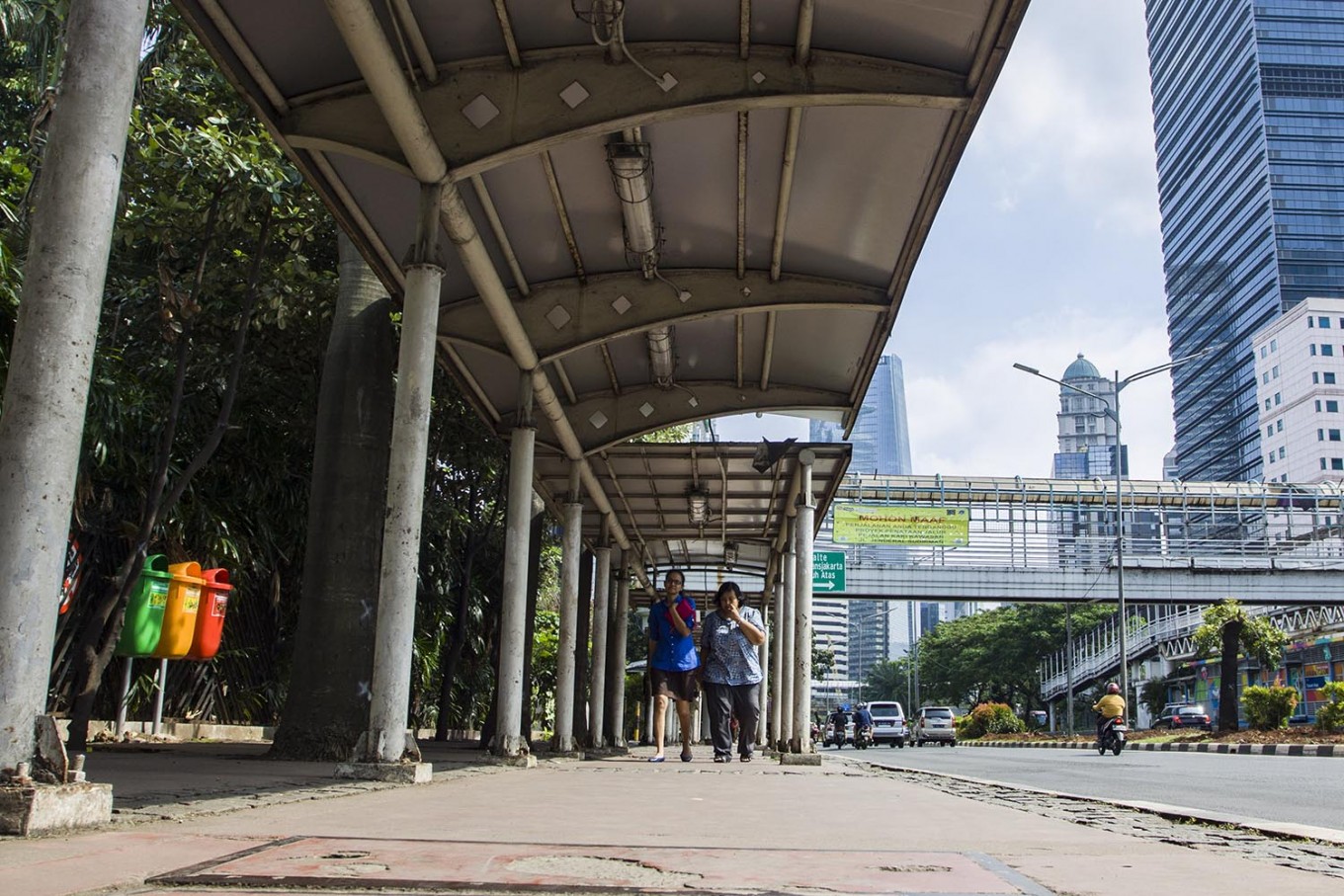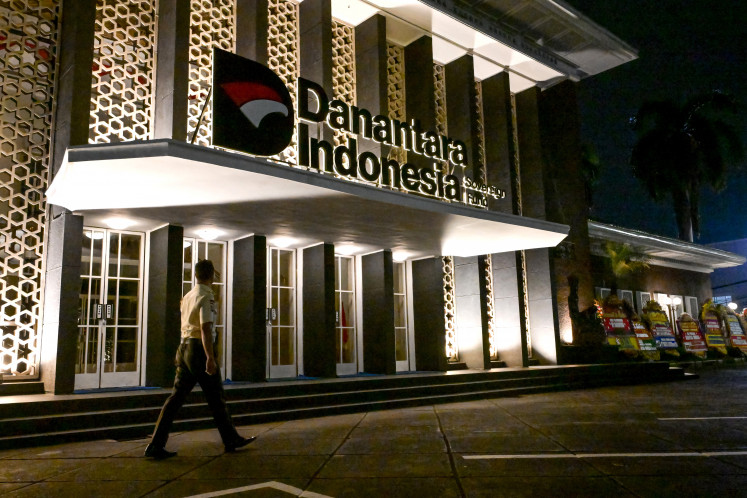After Asian Games, can we continue reclaiming Jakarta for pedestrians?
Jakarta was once a walkable city.
Change text size
Gift Premium Articles
to Anyone
 The 2018 Asian Games is a blessing for pedestrians for it provided pavement constructions near the main sporting grounds such as on Jl. Sudirman and the Senayan area. (Antara/Galih Pradipta)
The 2018 Asian Games is a blessing for pedestrians for it provided pavement constructions near the main sporting grounds such as on Jl. Sudirman and the Senayan area. (Antara/Galih Pradipta)
T
he Asian Games is a blessing for pedestrians for it provided pavement constructions near the main sporting grounds such as on Jl. Sudirman and the Senayan area. A huge investment was put into the Games, with Rp 7 trillion alone going in for infrastructure and transportation.
After clearing up our streets and making sporting facilities accessible to pedestrians during the Asian Games, can we continue to make Jakarta a walkable city (at the same rate) even after the Games?
Jakarta was once a walkable city. Areas such the old town, Jl. Sabang in Central Jakarta and the Melawai area in South Jakarta were designed for pedestrians. However, rapid urbanization, coupled with a lack of vision for livability, gave way to the popularity of the motorcar and the rise of suburbia and single use zoning. Just in 2017 alone, over one million cars were sold. According to local government data, only 7 percent of the capital’s about 7,000 km of road have sidewalks.
Past policies reinforced our dependence on the motorcar, as opposed to making Jakarta pedestrian-friendly. As a result, residents have had to bear long commutenever-endinging traffic jams and high transportation costs. Transportation accounts for a large portion of low-income individuals’ expenses, worsening inequality in a city that is not inclusive and accessible for all.
While functional sidewalks are necessary, they are not enough to make people want to walk. At least four aspects would encourage Jakarta residents to walk: infrastructure maintenance, safety and comfort, interesting experience and interconnectivity.
Maintenance needs more than robust systems and intense coordination. The Bina Marga road agency noted it needed coordination with more than a dozen agencies and institutions ranging from utility companies, government agencies and private building owners in order to build sidewalks.
According to urban studies expert Nirwono Yoga, Bina Marga has only been able to deliver 10 percent of the targeted pavement construction (of which only 1 percent are disabled friendly). We later learned that one reason for the slow delivery is bureaucracy. Political leadership at the top ought to facilitate coordination.
Pedestrians need to feel safe from crimes. Often this does not necessarily entail policing or CCTV installations, but merely by adding more lights or allowing street vendors, who can act as passive surveillance, to operate. Clearing up vendors after all may not be always be the solution since they are part of our culture. Bollards and trees make good buffers between a street and the sidewalk. Trees next to a street can slow cars down.
Comfort on the other hand requires builders to see things from the pedestrian point of view, checking whether they have minimized obstacles like potholes, open gutters and have built smooth ramps; whether there are areas where pedestrians can stop and rest or find shade. Bina Marga has recently involved local communities when constructing sidewalks and apparently this has proved to be effective.
Part of making a walk an interesting experience is having signs of humanity through active frontage. An active frontage is a continuous business or retail that opens directly to the footpath. Many large buildings and shop-house complexes in Jakarta are set back from the street to give way to driveways and drop off areas. This is mostly a consequence of a regulation which stipulates the setback distance and that building owners have no option but to comply. This particular regulation is the reason Jakarta does not have an active, legal retail street like High Street in London or Fifth Avenue in New York.
Jakarta Property Institute takes an active role in advocating amendment to this regulation through dialogue with policy makers. Makeshift or mobile street vendors can add to making the experience interesting. I recognize the perpetual conflict between providing enough space for them and ensuring smooth flows of pedestrian traffic. Perhaps the solution lies in involving local communities who are in the best position to find the delicate balance for their neighborhoods.
Without clear regulations on above-the-ground and underground structures, the Mass Rapid Transit project exposes the complications of constructing pedestrian connections to private properties and to other transportation modals controlled by different agencies. Stakeholders have not come to agreements as to who should cough up the construction costs, who should own and manage the assets – all of these are set against red tape in handing over assets to and from government agencies.
Until such issues are seriously settled, residents would still find private vehicles more attractive than public transportation and/or walking. More cars, traffic jams, bigger parking space—in the end, it’s the public who suffer most.
While the above issues are immensely complex, they leave one to ponder a seemly simple, fundamental question: what exactly is Jakarta’s spatial vision? Indeed, it is a question which we, including policymakers and elected officials, all struggle to answer.
Yet we are aware that a compelling, well-articulated vision will galvanize stakeholders and address many issues. All of us have a responsibility to shape such vision, and I have witnessed passionate individuals who challenge, question, take actions and enlist others. Both central and regional governments should lead inclusive discussions and set a spatial vision – one can reclaim Jakarta for pedestrians.
***
The writer is executive director of Jakarta Property Institute.









